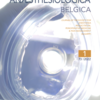Effect of dexmedetomidine on emergence delirium and recovery parameters with sevoflurane and desflurane anaesthesia in children : a double randomized study
Pediatric patients, Emergence Delirium, Dexmedetomidine, Sevoflurane, Desflurane, Systolic, Diastolic Blood Pressure
Published online: Jun 23 2022
Abstract
Background: Emergence delirium in pediatric patients is a significant cause of increased anxiety among parents. The incidence of emergence delirium in children varies mainly according to the anesthetic agents used.
Methods: In this prospective, double-blind, randomized trial, 152 children of age group 1-6 years were randomized into two groups after induction of anesthesia: Group S received Sevoflurane, and Group D received Desflurane. Children in the S group were further randomized into subgroup S- Dex (receiving dexmedetomidine 0.3 mcg/kg in 5 ml saline) and subgroup S-Saline (receiving saline 5 ml). Similarly, Group D was also randomized into two subgroups; D-Dex and D-Saline. We compared perioperative hemodynamic variables, postoperative emergence delirium, recovery profile, pain scoring, the requirement of rescue analgesics, and time to discharge.
Results: At 5, 15, and 30 minutes, the incidence of emergence delirium was significantly higher in S-Saline and D-Saline groups than S-Dex and D-Dex groups. Both PAED and FLACC scores were significantly higher in the S-Saline group than the S-Dex group and the D-Saline group compared to the D-Dex group (P<0.05). Significantly more patients required analgesia in the S-Saline group than in the S-Dex group (P<0.05). No significant difference for analgesia was present between D-Saline and D-Dex groups. (p = 0.153). Discharge time was significantly longer in S-Dex and D-Dex groups as compared to S-Saline and D-saline groups.
Conclusions: Dexmedetomidine effectively reduced the incidence of emergence delirium and postoperative pain in pediatric patients undergoing surgery using Sevoflurane and Desflurane anesthesia.
